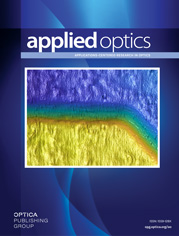Effect of submount thickness on near-field bowing of laser diode arrays 

Near-field bowing a laser diode bar (i.e., the “SMILE” effect) degrades the laser beam brightness, adversely affecting optical coupling and beam shaping. Due to thermally induced stress during the bonding process, the emitters in a laser diode array (LDA) are vertically displaced, which causes the SMILE effect. The mismatch between the coefficients of thermal expansion of an LDA (GaAs with 6.4 ppm/K) and a heat sink (Cu with 16.4 ppm/K) is a large obstacle in the LDA bonding process, because it provokes thermal stress and a large SMILE value, resulting in a larger divergence angle and a wider line after focusing and collimation. In this paper, the changes in stress and strain (SMILE value) and their effects on the laser bar as a function of the copper-tungsten (CuW) submount thickness were theoretically and experimentally studied. The finite element modeling simulations and experimental results show that the compression stress on the laser bar decreases with increasing CuW submount thickness because the CuW submount works as a buffer layer and can absorb stress. However, the laser bar out-of-plane strain (SMILE value) is approximately zero when the LDA is directly bonded onto the heat sink without a submount; the SMILE value is maximized when the CuW submount thickness is increased to approximately one half or 44% of the heat sink. Beyond that, the SMILE value decreases with increasing CuW submount thickness.
